Coffee lovers often face a choice between two classic favorites: cappuccino and latte.
Both beverages blend espresso, steamed milk, and foam into delightful cups that energize and comfort.
Yet, subtle differences define each drink, from milk ratios to texture and flavor profiles. I will introduce you to recipes of these two, along with variations, and some additional tips.
The Obvious Differences
A cappuccino is like a three-layer cake. You’ve got equal parts of espresso, steamed milk, and milk foam, stacked neatly. It’s bold, with that espresso punch really shining through, thanks to less milk. The foam on top is thick, giving it a bit of texture and a creamy sip every time.
Now, for the latte, imagine you’re pouring that steamed milk over the espresso like a gentle stream, much more milk than in a cappuccino. There’s just a whisper of foam on top. It’s smoother, creamier, and has a subtle coffee flavor that’s perfect for those who like their coffee a bit milder. And because of all that milk, it’s often served in a bigger cup.
So, in the simplest terms. Want a strong coffee flavor with some texture? Go cappuccino. Prefer something creamier and milder? A latte’s your best bet.
How to Prepare Cappuccino Like a Pro?
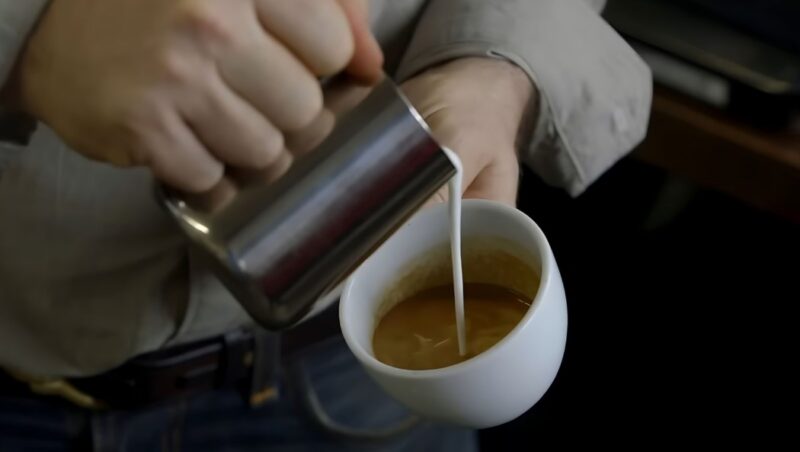
To make a cappuccino just as good as any you’d get in a top cafe, you need to know a few tricks. It’s not just about mixing espresso, milk, and foam. It’s about how you do it. Let’s break it down, real simple, so you can nail it every time.
Step 1 – Get the Right Ingredients and Tools
You need an espresso machine with a steam wand, fresh coffee beans, cold milk (your choice), and a grinder. Selecting quality coffee beans plays a crucial role in the flavor of your cappuccino.
Step 2 – Grind the Coffee
Aim for a fine grind, similar to table salt. This ensures the espresso is rich and not watery. Measure about 18-20 grams for a double shot, which serves as the base for a standard cappuccino.
Step 3 – Brew the Espresso
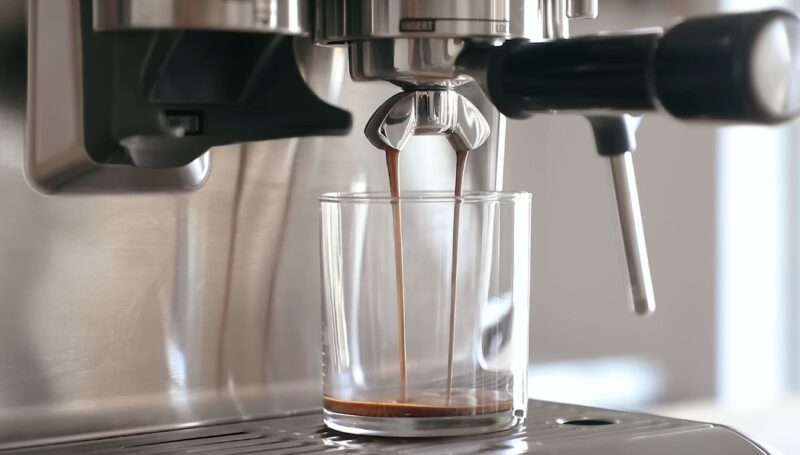
Tamp the ground coffee evenly in the portafilter to ensure water passes through the coffee uniformly. Lock the portafilter in place and start the brew. A perfect shot takes about 25-30 seconds to pour. Aim for 2 ounces (60 ml) of espresso.
Step 4 – Steam the Milk
Pour cold milk into a pitcher, no more than halfway to allow space for foam. Position the steam wand just below the milk’s surface. Start steaming to introduce air (this creates foam) and then submerge the wand deeper to warm the milk. The ideal temperature is around 150°F (65°C). You should achieve a glossy, smooth texture without large bubbles.
Step 5 – Pour the Milk and Foam
First, swirl the milk in the pitcher to mix the foam and liquid evenly. Pour the steamed milk directly into the center of the espresso from a low height, then raise the pitcher higher and tilt it to encourage foam to come out. Aim for a ratio of one-third espresso, one-third steamed milk, and one-third foam.
Bonus Tips
- Practice Your Pour: The pour can influence the texture of your cappuccino. Slow and steady wins the race.
- Milk Choice Matters: Different milks steam differently. Whole milk is traditional for its rich texture, but alternatives like oat or almond milk are viable for those with dietary preferences.
- Clean After Use: Always clean your machine and tools after use to maintain them in good condition and prevent off-flavors.
Or You Prefer Latte Instead
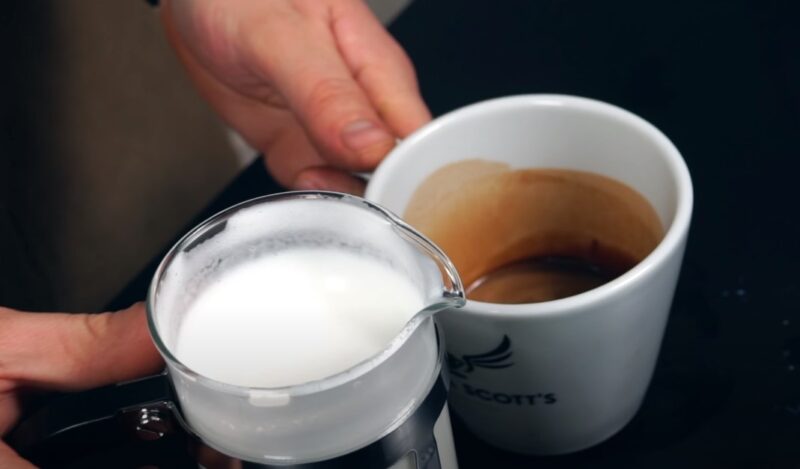
Lattes are all about that smooth, sweet taste that comes from plenty of milk and a nice bit of foam on top. I’ll show you how to whip up a great one, without much effort.
Select Your Coffee and Milk
First, choose a high-quality espresso. The espresso serves as the foundation of your latte, so its flavor is crucial. Next, pick your milk. Whole milk is traditional for its richness, but alternative milks like almond, oat, or coconut also work well and bring unique flavors.
Brew the Espresso
For one latte, you’ll need a single or double shot of espresso, depending on your preference. Use an espresso machine to pull your shot, aiming for a rich and robust espresso. If you don’t have an espresso machine, a stovetop Moka pot or a strong brew from a coffee maker can substitute.
Steam the Milk
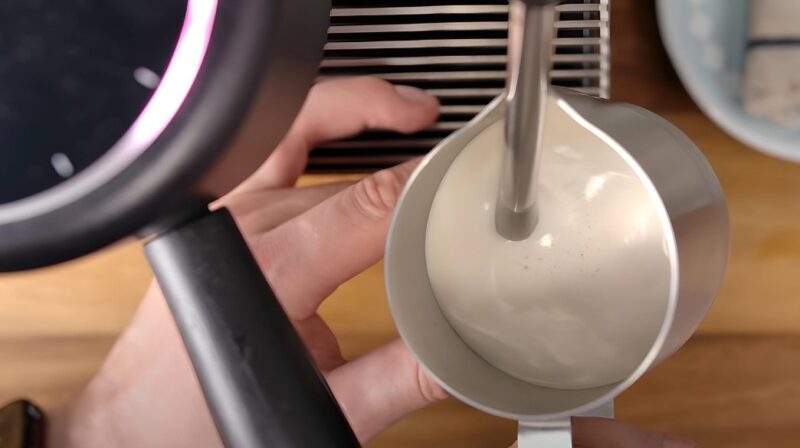
Milk steaming is an art that introduces air into the milk, creating a velvety texture that’s essential for a perfect latte. Heat your milk to around 150-155 degrees Fahrenheit. If using an espresso machine, use the steam wand. Keep the wand near the milk’s surface at first to create foam, then submerge it to heat the milk evenly. Aim for milk that’s silky and has small, uniform bubbles.
Combine and Customize
Pour the espresso into a large cup. Then, hold back the foam with a spoon and gently pour the steamed milk into the espresso. Spoon the foam on top. For a final touch, add flavorings like vanilla, hazelnut, or caramel to taste. Some enjoy a sprinkle of cocoa or cinnamon on top.
What Are other Popular Types?
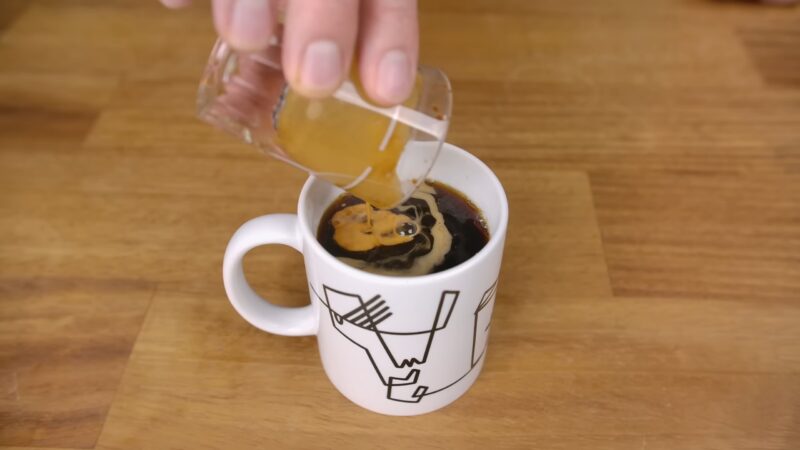
Let’s talk about some other coffee favorites you’ll find in a café, aside from the classic cappuccino and latte. Each has its own charm and offers a unique experience.
Flat White
First up, we’ve got the flat white. It’s like a latte’s close cousin but comes with a bit less milk. The key to a great flat white is the ratio of coffee to milk, which is roughly 1:2, and the milk is steamed but not frothy and airy like in a latte or cappuccino. It’s all about smooth, velvety milk poured over a shot of espresso, giving you a strong coffee flavor with a creamy texture.
Mocha
If you’re into something sweeter, a mocha might be up your alley. It’s basically a chocolate latte. You start with a shot of espresso, add hot chocolate or chocolate syrup, and then top it off with steamed milk and a bit of foam. Some places even add whipped cream on top. It’s a treat for anyone with a sweet tooth who still needs a coffee kick.
Macchiato
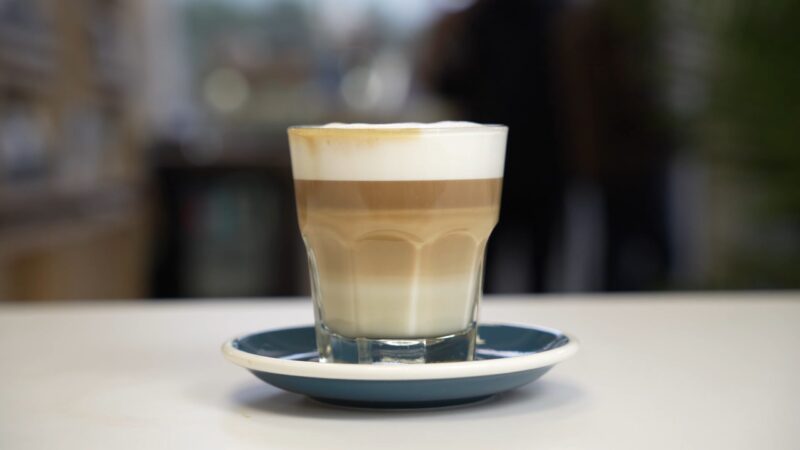
Then there’s the macchiato, which is perfect for folks who love their espresso but just want a hint of milk. “Macchiato” means “stained” or “spotted” in Italian, so it’s essentially an espresso “stained” with a little bit of steamed milk. It’s strong and has a more pronounced espresso flavor compared to lattes and cappuccinos.
Cortado
A cortado is pretty similar to a flat white but with an even balance of espresso and steamed milk, aiming for a 1:1 ratio. The milk is steamed but not frothy, cutting the acidity of the espresso for a smooth and balanced sip. It’s perfect for those who find a cappuccino too milky but a straight espresso too intense.
Americano with Milk
Last but not least, for those who prefer a milder coffee, there’s the Americano with a splash of milk. An Americano is made by adding hot water to a shot of espresso, giving you a similar strength to drip coffee but with a different flavor profile. Add a bit of milk to soften the taste, and you’ve got a comforting cup that’s easy to enjoy any time of day.
FAQs
Are Cappuccinos Healthy?
Cappuccinos can be part of a healthy diet if consumed in moderation. They’re lower in calories than many flavored coffee drinks, especially when made with skim or plant-based milk.
What is the Most Popular Coffee Drink in the World?
Espresso is often considered the most popular coffee drink worldwide. It’s the base for many other coffee drinks, enjoyed for its strong flavor and quick preparation.
What Coffee Do Italians Drink?
Italians typically enjoy espresso throughout the day, savoring its rich flavor and cultural significance. Cappuccino is also a favorite, but traditionally only consumed in the morning.
What is the Strongest Coffee?
The strongest coffee in terms of caffeine content is often considered to be Turkish coffee. It’s made with finely ground coffee beans boiled with water and sugar, creating a potent brew.
Conclusion
Whether you’re all about that strong, bold cappuccino with its perfect little foam hat, or you lean towards the creamy, dreamy world of lattes, it’s clear there’s no wrong choice, just what feels right for you in the moment. Making these drinks is really about playing around with espresso and milk until you find your sweet spot.
So next time you’re making yourself a brew, remember it’s all about what you’re into. Want a bit of a wake-up call? Cappuccino it is. Looking for something to cozy up with? Latte’s your friend.
